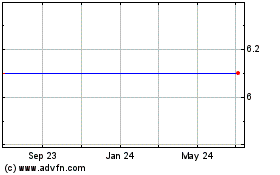By Jeannette Neumann
MADRID--Spain's economy is expanding but its banks' balance
sheets aren't.
Spain is expected to grow more than 3% this year, faster than
the U.S., Germany and most other advanced economies.
But the amount of loans on Spanish banks' balance sheets has
remained flat or fallen during the past year, driving down a key
measure of profitability and heightening investors' concerns about
lenders' ability to generate income next year.
It wasn't supposed to be like this.
"At the beginning of the year, we expected that we were going to
have loan growth this year," José Antonio Álvarez, chief executive
of Banco Santander SA, told reporters on Oct. 29. "We expected more
intense demand for credit. The economy is growing well, very
well."
In hindsight, executives at Santander and other Spanish banks,
as well as some analysts and investors, say they underestimated the
depth of the recession from which Spain is emerging and a
consequence known as deleveraging.
Some individuals and businesses in Spain are in fact borrowing
millions of euros in new loans each quarter from banks, but others
are paying off their existing debts at a faster pace. That
deleveraging causes the total volume of loans on Spanish banks'
balance sheets to drop.
Santander, the eurozone's largest lender by market share, had
roughly the same amount of outstanding loans in Spain in the third
quarter of this year as a year ago. Bankia SA, the country's
biggest bailed-out bank, saw a decline. And if it weren't for their
purchases of smaller Spanish banks, loan volumes at Banco Bilbao
Vizcaya Argentaria SA's Spain unit and Caixabank SA would have
fallen year on year, too. Even with the bank buying, each of those
lenders saw a decline in loans in the third quarter compared to the
second.
Spanish borrowers have a lot of debt to work through. A
borrowing binge that helped finance a building frenzy came to a
halt in 2008 and plunged the country into recession through
mid-2013. The debt held by Spanish businesses and households is
expected to be more than double the country's economic output until
at least 2020, the International Monetary Fund said.
Bankers said last year they expected Spain's
better-than-anticipated economic growth to ease the country's
existing debt burden and encourage new investment and borrowing,
expanding banks' loan books during 2015.
The drivers of Spain's economic expansion, however, throw light
on why that hasn't happened.
While Spain's 3.1% anticipated growth rate this year is notable,
the country is still playing catch-up after years of contraction,
said Juan Ignacio Sanz, a professor at Spain's Esade business
school. Spain's total output in euros is expected to exceed
precrisis levels only in 2017, according to the IMF.
Although Spain's 21% unemployment rate remains among Europe's
highest, it is decreasing. But many of those who do have jobs have
seen their salaries slashed as Spanish companies cut costs to pay
down debts or make their exports more competitive. Such borrowers
are focused on paying off the debts they have, not borrowing more,
even at super low interest rates.
Despite such headwinds, some Spanish consumers are spending
more. That--along with lower energy costs, more tourists, increased
government spending and election-year tax cuts--has stimulated the
economy. Consumer spending, though, "doesn't require much credit"
from banks, said Juan José Toribio, an economics professor at IESE
business school in Madrid.
Buyers who want loans to purchase a refrigerator or a car, for
instance, don't need to borrow as much from a bank as they would to
take out a home mortgage. The euro amount of mortgages that Spanish
banks sold in 2014 was 2 1/2 times smaller than that issued in
2010.
Shrinking loan volume is a drag on a main source of banks'
revenues, net interest income--the difference between the interest
they earn on loans and what they pay on deposits and other
funding.
Banks are also feeling the pressure of ultralow interest rates.
Most home loans in Spain are variable and pegged to the euro
interbank offered rate, or Euribor, which has plummeted during the
past year. The decline in Euribor has been sharper than anticipated
a year ago, Bankia CEO José Sevilla told reporters on Nov. 2. That
means existing loans are bringing in less revenue than
expected.
Businesses have taken advantage of the decline in Euribor to
renegotiate their loan contracts to pay less, Mr. Sevilla said.
Some local governments are borrowing less from banks, he added.
"All that together, I think, explains this evolution of
financial margins that is perhaps a bit less positive than could
have been expected a year ago," Mr. Sevilla said. "This dynamic is
going to continue to [negatively] impact financial margins until at
least 2016."
Another reason Spanish bankers and some analysts were overly
optimistic a year ago about the demand for new loans is a misread
on how strongly some borrowers have shied away from debt.
Unable to make monthly mortgage payments during the crisis, many
Spaniards were evicted or handed their house over to the bank, a
traumatic experience in a country that has one of the highest rates
of home ownership in Europe and where individual wealth is tied to
home equity.
Some Spaniards now shun taking on more debt "because they have
the memory of how bad it was during the crisis," said Mr. Toribio,
the IESE professor. "That had a more important impact than we
thought."
Write to Jeannette Neumann at jeannette.neumann@wsj.com
(END) Dow Jones Newswires
November 12, 2015 17:19 ET (22:19 GMT)
Copyright (c) 2015 Dow Jones & Company, Inc.
Banco Santander (NYSE:STD)
Historical Stock Chart
From Mar 2024 to Apr 2024

Banco Santander (NYSE:STD)
Historical Stock Chart
From Apr 2023 to Apr 2024
